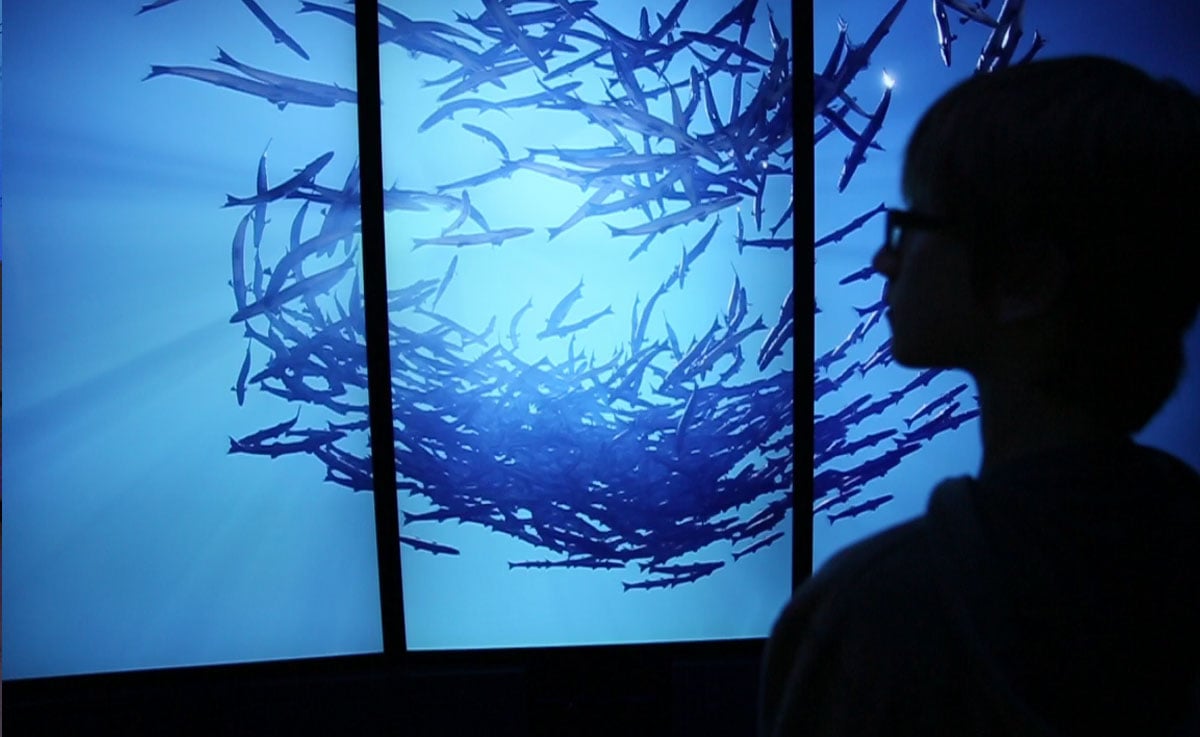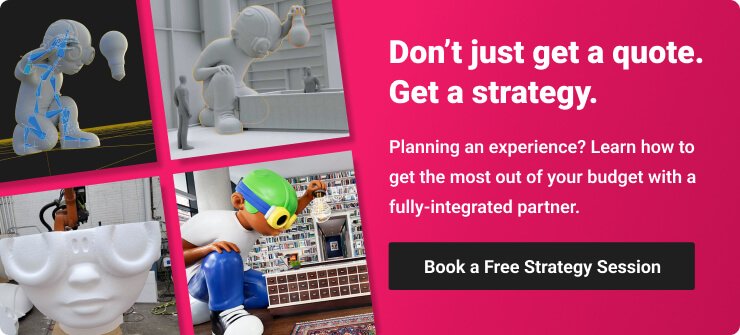Museums have long been guardians of our cultural heritage, preserving history and inspiring wonder. However, in the modern age, these time-honored institutions have evolved to captivate today’s audiences through the innovative integration of technology. This article explores seven pioneering examples of museum technology that harness the power of immersive, interactive exhibits to create next-generation experiences to engage visitors like never before.
From augmented reality that brings ancient civilizations vividly to life to multimedia installations that transform entire galleries into multi-sensory wonderlands, these cutting-edge showcases demonstrate how museums are embracing technology as a powerful storytelling tool. By seamlessly blending the physical and digital realms, these exhibits offer unique opportunities for education, entertainment, and connection.
Whether you're a museum professional seeking inspiration or a technology enthusiast fascinated by the intersection of art and innovation, this curated collection of boundary-pushing exhibitions from around the globe will spark ideas and showcase the exciting future of museum experiences. Explore how the world's leading institutions are elevating their offerings through thoughtful tech integrations that enhance rather than detract from their core missions.

What Kinds of Interactive Technology Are Used in Museums?
Interactive Projection Mapping
Interactive projection mapping involves projecting images and videos onto physical surfaces, allowing them to move and change based on viewer interaction. In museums, this can transform static exhibits into dynamic, engaging experiences where visitors can influence the visuals by their movements or gestures.
Immersive Projection Environments with Interactivity
Immersive projection environments envelop visitors in a 360-degree digital display that responds to their presence or actions. This technology can create an all-encompassing experience, such as simulating historical events or natural environments, making visitors feel as though they are part of the scene.
Personalized Experiences Using AR/MR
Augmented Reality (AR) and Mixed Reality (MR) technologies overlay digital information onto the real world, providing personalized content based on visitor profiles or preferences. Museums can use AR/MR to provide custom tours, interactive educational content, or enhanced storytelling that adapts in real-time.
Motion Tracking
Motion tracking captures and analyzes human movement, enabling exhibits to respond dynamically to visitor actions. Museums can use this to create interactive displays that change or react based on the movement of visitors, making the experience more engaging and personalized.
Holographic Displays
Holographic displays, like Pepper's Ghost, create the illusion of three-dimensional, floating images. Museums can use these to bring historical figures or events to life, allowing visitors to see and hear lifelike holograms that complement physical exhibits.
4D Theatrical Shows
4D theatrical shows combine 3D video with physical effects, such as motion seats, sound, lighting, wind, and scents, to create a multi-sensory experience. In a museum setting, these shows can immerse visitors in historical or environmental settings, making education fun and thrilling, because it’s like an amusement park ride.
Transparent OLED Displays
Transparent OLED displays allow digital images to be overlaid on physical objects without obstructing the view. Museums can employ these displays to provide additional information, animations, or context directly onto glass cases or exhibition panels.
Gamified Experiences
Gamified experiences use game design elements to engage and motivate visitors. Museums can apply this approach to create interactive learning challenges, treasure hunts, or quizzes that make the educational process entertaining and participatory.
AI-Assisted Virtual Tour Guides
AI-assisted virtual tour guides leverage artificial intelligence to provide real-time, personalized tours and information. Museums can use these guides to tailor content to individual visitor interests, including assisting visually impaired or neurodivergent guests and providing interactive, on-demand information throughout exhibitions.
AI-Assisted Photo Ops
AI-assisted photo ops use artificial intelligence to detect visitor positions and generate creative, personalized photos. Museums can offer these interactive photo stations where visitors can see themselves in historical settings or with virtual artifacts, creating memorable keepsakes.
Innovative Museum Technology: 7 Inspiring Examples
Xperia Ocean Journey

This immersive, fully-digital aquarium brings the oceanic world to life for visitors in Sevierville, Tennessee. Combining digital storytelling with CGI animation and massive LED video walls, visitors can explore the vastness of the ocean and sea life in a highly engaging and multi-sensory manner.
Atelier des Lumieres
A digital art museum, Atelier de Lumieres features rotating exhibitions fusing art, technology, light, sound, history and culture to bring concepts, artistic styles and historical eras to life for visitors. Every exhibit is an informative and interactive journey, often employing immersive projection mapping, motion tracking, LED video walls and audio elements to transport guests to another place and time.
Refik Anadol’s Unsupervised

This innovative exploration of machine learning (AI) and art was featured at MoMA, New York from November 2022 to October 2023. It drew from more than 200 works of art and dynamically reimagined them on a grand scale through AI.
Beyond the Light

ARTECHOUSE’s immersive exhibit about light and deep space was developed in collaboration with NASA. It features seamless projection mapping and hyperreal, spatialized sound technology to create an unforgettable art and educational experience in New York City.
FutureWorld

A digital interactive exhibit featuring art, science, magic and metaphor was developed in collaboration with art collective teamLab. With four distinct installations, guests can engage with, contribute to and witness natural and galactic phenomenon in this technology-rich experience. Featuring augmented and mixed reality, LED video walls, immersive projection mapping and responsive technology, Future World is a multimedia technology-fueled experience at ArtScience Museum in Singapore.
Blue Paradox

This impactful exhibit at MSI (Chicago), takes visitors on an immersive journey into the oceans to experience the impact of plastic pollution on the Earth’s largest eco-system. Using curved LED-walls, projection mapping, digital kiosks and much more, visitors are taken on a deep dive into one of the planet’s biggest environmental challenges.
The Deep Gallery

The Deep Gallery at the St. Louis Aquarium in Missouri features a giant curved LED wall to envelop guests in a deep ocean environment and leverages other forms of interactive media to allow guests to discover creatures from the deep ocean that are rarely seen by humans.
What’s Next for Museum Technology
As museums embrace technological advancements to enhance exhibitions, the focus is increasingly shifting towards leveraging these innovations to improve the overall visitor experience. Integrating advanced technology can streamline operations such as wayfinding, accessibility, ticket sales, and even offer remote experiences for those unable to attend in person.
Artificial Intelligence (AI) plays a crucial role in this transformation, enabling the personalization of information and experiences to cater to individual visitors' interests and preferences. By creating a seamless, enriched visit, museums can foster deeper connections with their audiences, making each trip not just educational but also highly engaging and memorable.
However, the adoption of technology in museums goes beyond installing the latest gadgets. It is essential to secure institutional buy-in to ensure that any investment in technology remains valuable throughout the exhibit's lifecycle. It's crucial to consider long-term relevance and sustainability rather than focusing solely on initial implementation.
Finding a reliable partner who can develop and deliver technology solutions with future updates and maintenance in mind is imperative. Many exhibits extend beyond their projected lifespans; planning for ongoing support, regular updates, and maintenance is key to keeping exhibitions fresh, relevant, and functioning optimally. By thinking strategically about the full lifespan of technological elements, museums can maintain their competitive edge and continue to inspire and educate future generations.
Final Thoughts on Museum Technology
The examples highlighted in this article demonstrate how global institutions leverage the power of immersive, interactive museum technology to transform traditional exhibits into multi-sensory experiences that educate, entertain, and inspire like never before. These establishments blur the boundaries between the physical and digital realms by thoughtfully integrating cutting-edge innovations like augmented reality, multimedia installations, and responsive environments.
Through museum technology, three key opportunities emerge:
- Leverage technology as a powerful storytelling tool to bring exhibitions to life and forge deeper connections with diverse audiences.
- Offer unique educational experiences that fully engage visitors of all ages through hands-on, immersive learning.
- Elevate institutional offerings and ensure relevance by embracing innovation while staying true to core missions.
As these examples illustrate, the future of museum experiences is here and the possibilities are endless. Is your institution ready to be at the forefront of this transformation?
Book a free, no-obligation strategy session with Bridgewater Studio today to discover how our diverse team of exhibit designers and technologists can help harness the full potential of immersive museum technology for your next exhibition. Let's create wonders that inspire generations to come.


.png)
.png)
.png)








